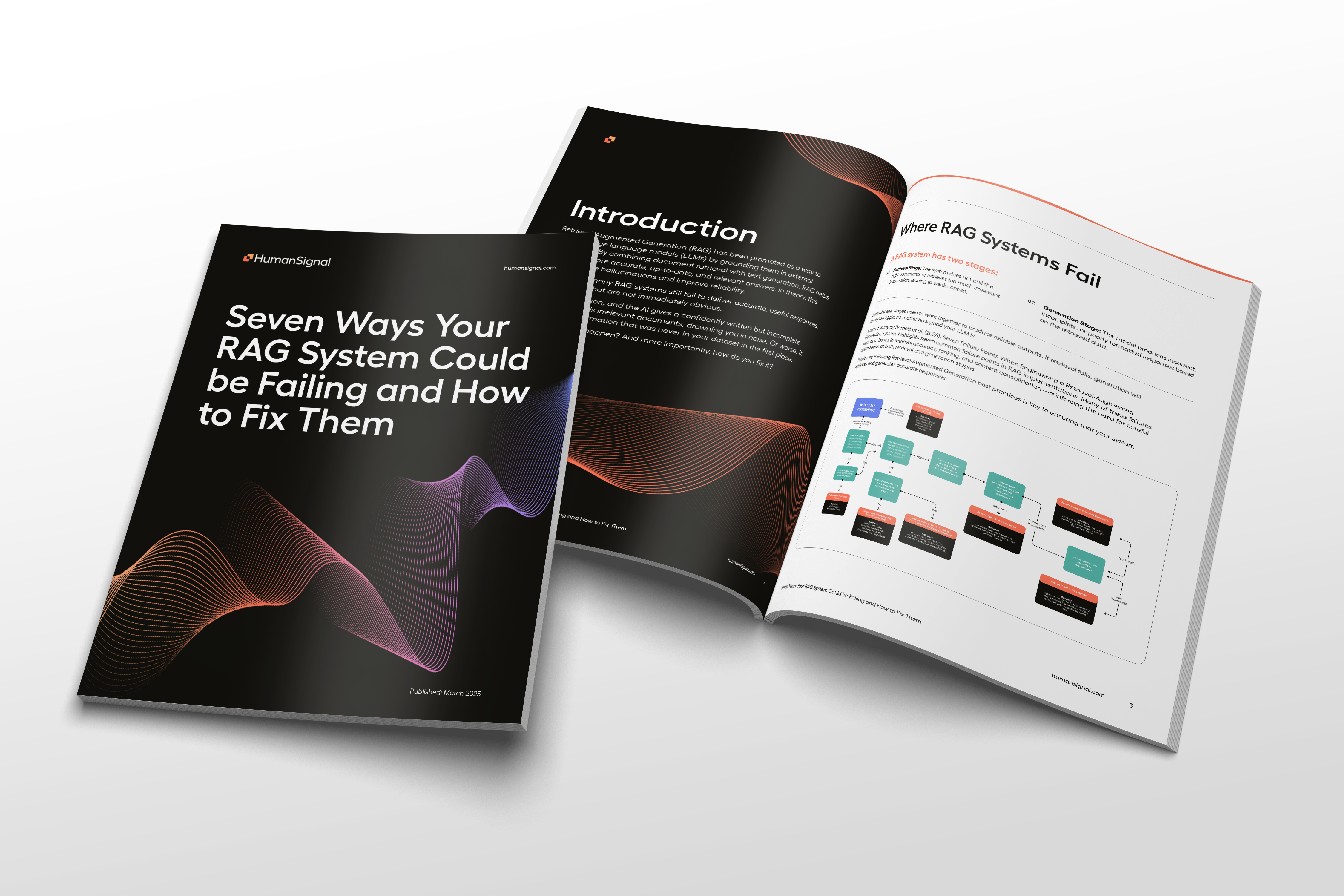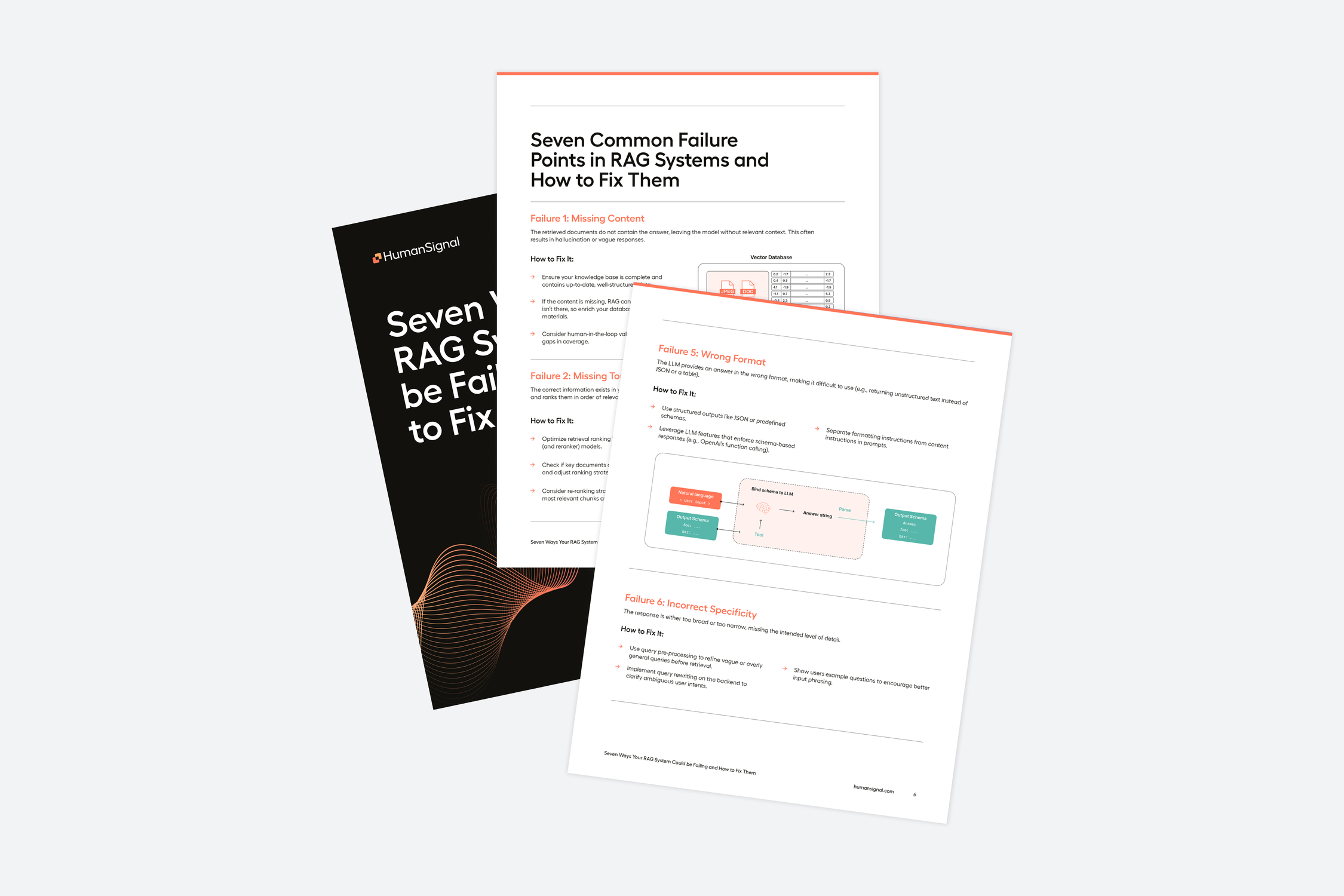Seven RAG Failures and How to Fix Them
Diagnose and fix common Retrieval-Augmented Generation breakdowns.
Even the best large language models can fall short if your RAG system isn’t built right. This resource walks through the most common failure points and how to fix them with better retrieval, ranking, and generation strategies.





